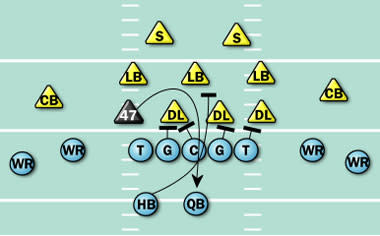Seahawks' pass rush needs a boost
Also in this article:
Next Surveillance:
Browns
More NFL:
Editor's note: Yahoo! Sports will examine the biggest weakness for every team during the 2009 season and explain how the franchise can help address the issue. The series continues with the Seahawks, who finished third in the NFC West (5-11).
Biggest problem in 2009: A subpar pass rush

Seahawks coach Pete Carroll patrols the minicamp in April.
(Elaine Thompson/AP Photo)
The Seattle Seahawks have transformed from a perennial playoff contender to one of the league's worst teams over the past three seasons. While there are several reasons for this recent malaise, one of the primary issues has been a declining pass rush. The Seahawks haven't had a 10-sack defender since 2007 (Patrick Kerney(notes), 14½), and the defense's overall sack totals have dropped severely. According to Football Outsiders' Adjusted Sack Rate statistic – which gives sacks plus intentional grounding penalties per pass attempt adjusted for down, distance, and opponent – the Seahawks have plummeted from seventh in 2007, to 17th (2008), to 29th (2009). Last season, Kerney led the team with five sacks and subsequently retired.
As is generally true, the lack of a pass rush led to a horrible pass defense – the Seahawks tied for 22nd in yards per attempt allowed (7.2), tied for 24th in touchdowns allowed (27), finished 30th in first downs allowed through the air (204) and allowed the fifth-worst passer rating in the NFL (93.4).
With holes all over the roster, the team wasn't able to fill the defensive end position in a way that would increase Seattle's pass-rush totals in a consistent fashion. As a result, new head coach Pete Carroll will get creative with the playbook and install some hybrid fronts.
The 2010 solution: Using different fronts and stunts, and Elephants
The "Elephant" position Carroll learned during his time as an assistant coach with the 49ers in the mid-1990s has morphed into the "Leo" concept in Seattle. In short, the idea is to give a 3-4 look upfront, with a linebacker or stand-up defensive end crashing the edge. "It's a position that can take on different sizes and shapes, but it is a spot – a little bit of a hybrid position – that is kind of a linebacker, kind of a defensive end. We picture it as a speed-oriented guy," Carroll recently told the team's official website.

The Seahawks traded end Darryl Tapp(notes) to the Eagles for Chris Clemons, who's the odds-on favorite to play the position in Seattle. However, Carroll has said that one of the first things he did upon taking the Seahawks job was to get some film cut-ups of Aaron Curry(notes), the team's first-round NFL draft pick in 2009, to see how Curry could be better used in pass pressure situations.
Carroll got great sack seasons out of Chris Doleman in San Francisco and Willie McGinest(notes) in New England before he went to USC. For the Trojans, the most obvious beneficiary of the position was Clay Matthews(notes). In 2008, Matthews' only collegiate season as a starter, he played the "Elephant" position and amassed 4½ sacks and nine tackles for loss. He was able to parlay that game film into a new role, crashing outside protection as the primary pass rusher in a straight 3-4 defense for Green Bay. Matthews led the Packers with 10 sacks and 21 quarterback hurries.

Chris Clemons
One thing Matthews would do in that role – and you can expect to see this from Clemons, et al – was to stunt inside to exploit specific protections. In the diagrammed example, Matthews looped around a double-team past a blocking back, and demolished the quarterback. Depending on the protection and the call, Matthews could get a head of steam going outside from the stand-up position (his primary role in Green Bay) or even drop into coverage – the Packers also enjoyed the benefits of Matthews' speed in space. This could help Curry most of all – the second-year man has demon speed in any direction, but he might be more adept in zone blitz looks than in straight coverage, and he did occasionally blitz off the edge in 3-4 fronts at Wake Forest.
It will be another season before the Seahawks can draft or sign an elite pass rusher, but if Carroll has his way, a few tweaks to the base 4-3 defense will extract that difference-maker from the current roster.
